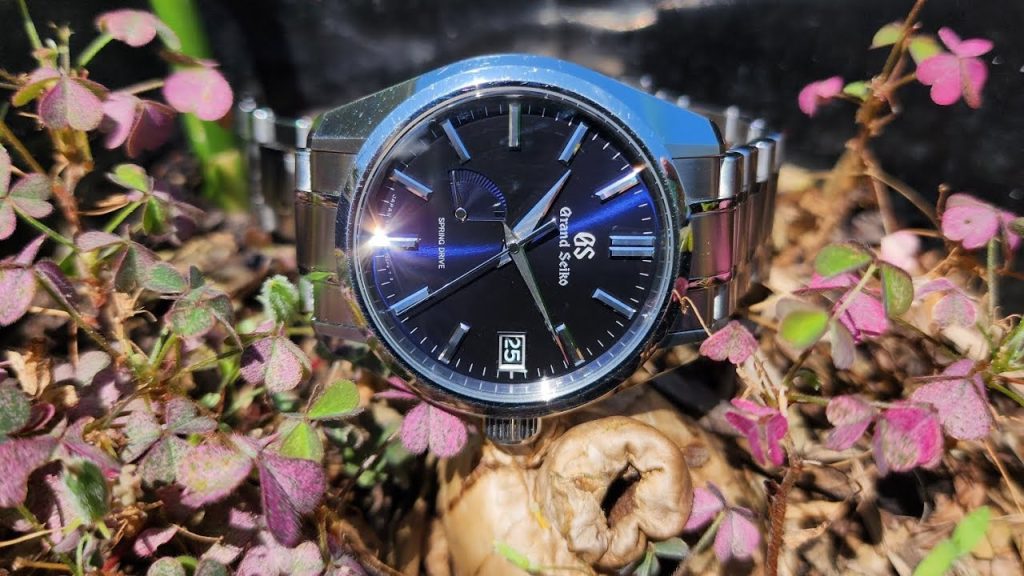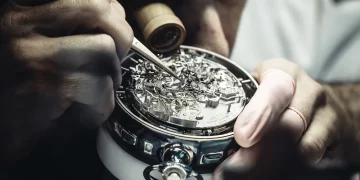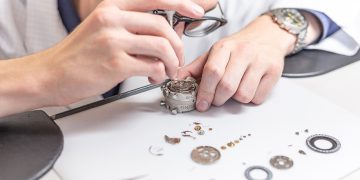Craftsmanship Duel: Zaratsu vs. Geneva Stripes
In the world of high horology, finishing is where machines stop and human hands begin. It’s the final layer of soul applied to a watch—one that elevates steel and brass into artistry. For decades, Switzerland held undisputed dominance in this arena, with maisons like Vacheron Constantin, Audemars Piguet, and Patek Philippe defining the very codes of haute horlogerie. But tucked away in the quiet town of Shiojiri, Japan, lies an unlikely rival: Grand Seiko’s Micro Artist Studio. And it may now be the single most technically advanced and aesthetically refined finishing atelier in the modern watch industry.
The core of this reputation lies in a single, obsessively executed technique: Zaratsu polishing. Derived from a German machine adapted for Japanese sword finishes in the 1950s, Zaratsu involves pressing a case or part flat against a rotating tin plate coated with abrasive, using only hand pressure and visual feedback to control the process. There are no guides, no templates, no measurements—only intuition, repetition, and the relentless pursuit of distortion-free reflection. Each surface is polished until it reflects like a black mirror, with edges so sharp they appear blade-cut.
By contrast, Geneva stripes—also known as Côtes de Genève—are applied using a jig that draws a spinning abrasive across the movement plates in parallel arcs. Beautiful and iconic, this Swiss technique is designed to emphasize mechanical geometry, offering depth, texture, and light play. But unlike Zaratsu, Geneva stripes serve a decorative purpose; their symmetry masks underlying machining. Zaratsu, on the other hand, punishes imperfection—any unevenness in the base metal is amplified, not hidden. In a way, Zaratsu is not a finish at all—it is the revelation of material truth.
Blind Test: Can Collectors Tell Japan from Switzerland?
In late 2024, a prominent collector’s club based in Hong Kong organized a unique challenge. Ten seasoned watch collectors, each with more than 15 years of horological experience, were invited to participate in a blind evaluation of finishing quality across a set of 12 watches—six Swiss and six Japanese, all stripped of brand markings. The group included pieces from Grand Seiko’s Micro Artist Studio, Vacheron Constantin’s Les Cabinotiers, A. Lange & Söhne’s Handwerkskunst line, and Credor’s Eichi II series.

Participants were asked to rate each piece on edge consistency, depth of polish, anglage sharpness, and surface distortion. The results, while close, delivered a surprise. Two Grand Seiko models received the highest composite scores, outperforming even the venerable Geneva heavyweights. In particular, the Spring Drive 8 Day Power Reserve model (Ref. SBGD201) was unanimously praised for its black-polished bridge, whose mirror finish outshone even the hand-finished balance cocks of its Swiss counterparts.
More telling was the confusion: most participants assumed the Zaratsu-polished surfaces belonged to Swiss pieces. The invisibility of seams, the sharp delineation between brushed and polished zones, and the flawless distortion-free finish had created an illusion of European origin. Only one participant correctly identified all the Japanese pieces—a testament to just how far the Micro Artist Studio has blurred old boundaries.
This wasn’t an isolated incident. At trade shows, watch fairs, and in private collecting circles, seasoned eyes increasingly report difficulty distinguishing Grand Seiko’s high-end finishing from the best of Geneva. The once-dismissive “quartz brand” stigma has quietly given way to admiration, respect, and even envy.
Value Picks: Three Underappreciated Non-Limited GS Masterpieces
While Grand Seiko’s limited editions often attract headline attention—especially those with Kirazuri dials or poetic Spring Drive complications—the true gems lie just beneath the hype. Several references produced in non-limited runs offer equivalent levels of finishing at fractions of their Swiss peers’ prices.
- Grand Seiko SBGA407 ‘Blue Snowflake’
Often overshadowed by its white-dialed sibling, the SBGA407 features the same handcrafted titanium case with a layered snow-texture dial that plays with light like falling frost. The case flanks, executed in Zaratsu, contrast beautifully with the dial’s matte softness. Paired with the Spring Drive caliber 9R65, this watch delivers buttery smooth seconds sweep and an elegance hard to match under $6,000. - Grand Seiko SBGH269 ‘Autumn Dial’
This Hi-Beat model may seem dial-driven at first, with its deep vermillion hue inspired by Japanese maple leaves. But it’s the casework and movement finishing that make it a sleeper hit. The razor-sharp transitions between Zaratsu-polished surfaces and brushed lug interiors are extraordinary. The 9S85 movement inside features crisp Geneva stripes, thermally blued screws, and anglage that rivals pieces twice its price. - Grand Seiko SBGJ201 ‘Mt. Iwate’ GMT
As one of the few regular-production models with a dual-time complication and a textured dial that rivals enamel, the SBGJ201 hides Micro Artist finesse in plain sight. The mirror-like sheen of the bezel and lugs, combined with the precise chamfers around the date window and markers, reveal Grand Seiko’s core strength: making everyday excellence appear effortless. At around $7,000, it’s a daily wearer with the soul of a collector’s piece.
Why Swiss Brands Are Paying Attention—and Taking Notes
The impact of Grand Seiko’s rise is no longer theoretical. Industry insiders report that Swiss maisons have begun benchmarking GS references during product development meetings. At a recent SIHH design review session, one brand’s creative director was overheard referencing “Seiko-level polishing expectations” as the new baseline for entry-level complications. This shift is perhaps most visible in the increasing use of ultra-flat polish finishes and reduced reliance on machine-applied textures in mid-range Swiss lines.
Even more telling is the cultural recalibration. Where once Japan was seen as the land of industrial reliability and efficiency, it is now increasingly viewed as a stronghold of purity, restraint, and humanistic craftsmanship. The Micro Artist Studio, with its dozen-strong team of artisans—each trained for years in a single task—embodies a post-industrial ideal: fewer pieces, better made, for those who see timekeeping as existential, not functional.
Conclusion: When Humility Becomes the Highest Luxury
The irony is that Grand Seiko never set out to compete with Switzerland. The Micro Artist Studio does not operate with Swiss rivalry in mind; it works in quiet service of Shokunin—the Japanese philosophy of mastery through dedication. There is no marketing department steering the finish of a Zaratsu edge. There is only the hand, the metal, and the reflection. And somehow, that honesty has become its own form of luxury.
For collectors weary of over-designed, over-marketed, under-delivered watches, Grand Seiko offers something different: a serene intensity. Every line, every polished surface, every shimmer beneath a dial crystal feels deliberate—earned, not borrowed. And in 2025, that may be the most valuable distinction of all.








































